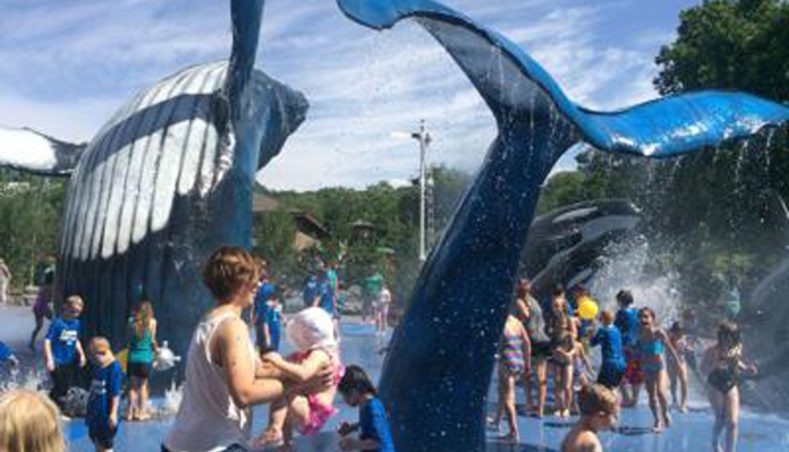Breaking Into the Field of Themed Entertainment Design, Part 2: Design
Posted in Insights -

By Chris Roy, Director of Creative Design for OTL
In last month’s article, we explained why it’s imperative for anyone looking to break into the field of themed entertainment design to understand the critical role operations plays in this industry.
We emphasized the fact that even if your role is not firmly planted within the operations discipline, you must be able to work with these folks and have a general understanding of corporate goals and realities to be successful.
In this article, we will tackle one of the most creative aspects of themed entertainment design – the role of design itself – and what to be aware of regarding design when pursuing a career in this realm.
The role of design itself
Design is the creative side of the industry.
Roles include themed-entertainment designers, architects and landscape architects, writers, concept artists, draftsmen (and -women!), show designers, lighting designers, theatrical lighting designers, media designers, IP creators, and a host of ancillary design professionals – which is where my specific profession falls: water feature design and artificial rockwork design.
Note that in the roles I just listed, there is a wide range of technical and artistic overlap, and there are professionals working in all these roles who are either right-brain creative types, left-brain technical types, or combinations of both.
Architects are a great example. There are creative architects and architectural designers that are pushing the boundaries of design, coming up with new concepts, questioning the status quo, etc. Then there are the technical architects that are plotting Life-Safety corridors through buildings, ensuring that everything from hallway width to the number of parking spaces on a project complies with code requirements, and so forth. Landscape architects, likewise, work in a range of roles, from overall site planning and programming to plant and finishes selection on the creative side, down to irrigation and drainage design on the technical side. The technical side of the design business is on a continuum that progresses into engineering, and that’s why those individuals who are capable of both ways of thinking are so valuable – they offer enormous financial benefits to their employers by allowing more work to be completed in-house and simplifying coordination with or reducing the need to hire specialty engineering consultants.
There is a common thread that runs through all entertainment-related design which separates it from non-entertainment design such as more traditional architecture or product design. This thread is Narrative – storytelling. It is the single item that sets entertainment design apart from other aspects of the design industry. While there are plenty of jobs that don’t require storytelling, it is the cornerstone of a career in the field. It is the de-facto creative ability that will allow you to thrive in this industry.
You need to be able to distill down the core components of your project, just like a reporter, and answer key who, what, when, where, why, and how questions. Who will be visiting your project? Who are the characters on which your project is based? Where is your project located in reality? Where is your project’s imagined location (fantasy)? In what kinds of activities will visitors want to partake? In what kinds of activities would the project’s characters be partaking? Why does the project exist? When will people be visiting your project? When in time is the project set? Why does the project exist conceptually? How are you going to accomplish this? How would the project’s characters accomplish their goals? (And what are their goals? Why are those their goals? And so forth.)
This is pure research and storytelling. The more you’re interested in learning (about everything!) the better you’ll do, as you’ll be able to find a broad base of inspiration. The worst theme parks draw upon tropes that exist in other theme parks – they’re copies of copies. The best theme parks bring something new to the table; they create a new experience unlike any other. They’re unique.
Writing is an art. Creative design is an art. If you’re great at (or can learn) figure drawing, that’s awesome – to tell your story, you need to be able to show people interacting within your imagined environments. (Full disclosure: I’m terrible at figure drawing, but thankfully, I love Photoshop, so many of the renderings that I create use figures Photoshopped in to fill the roles of future visitors and customers.) If you can draw people by hand – using pencil and paper and/or digitally – then that is all the better.
Creative jobs are available with a wide variety of specialty consultants, design firms and design/build companies, as well as within the theme park companies themselves, such as Universal Creative or Walt Disney Imagineering.
Just as design roles such as architecture run on a continuum from creative to technical, so do the more artistic roles, ranging from illustration to 3D modeling and animation. You might want to focus on character or environmental development, or you might want to focus on 3D modeling. The former are more traditional drawing-based – even with digital drawing and painting – while the latter is more tech-based and is merging with video game development.
Which is a great segue to the important subject of Education: What colleges or education track will create the best foundation for a career in themed entertainment design? Check back next time to find out!
Stay tuned for Part 3 of this series, which will cover Education, in an upcoming OTL newsletter.